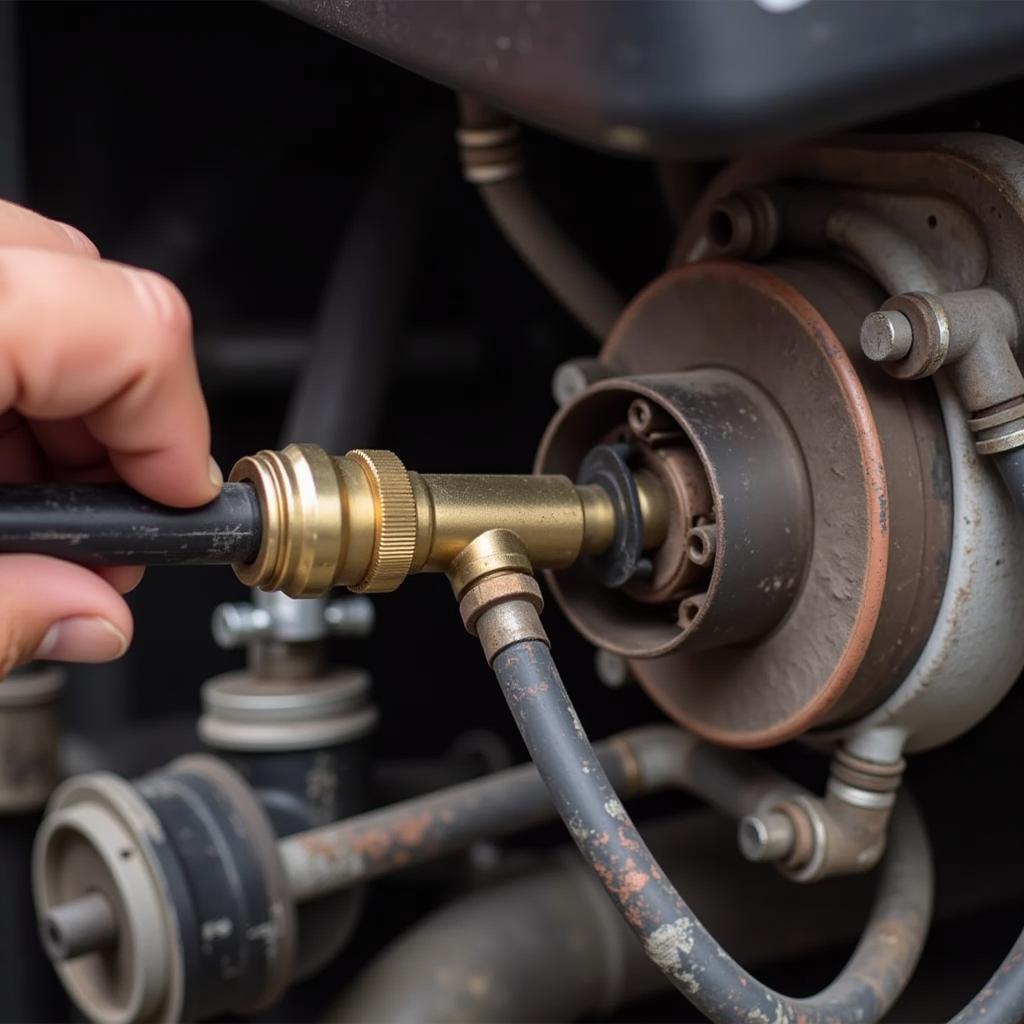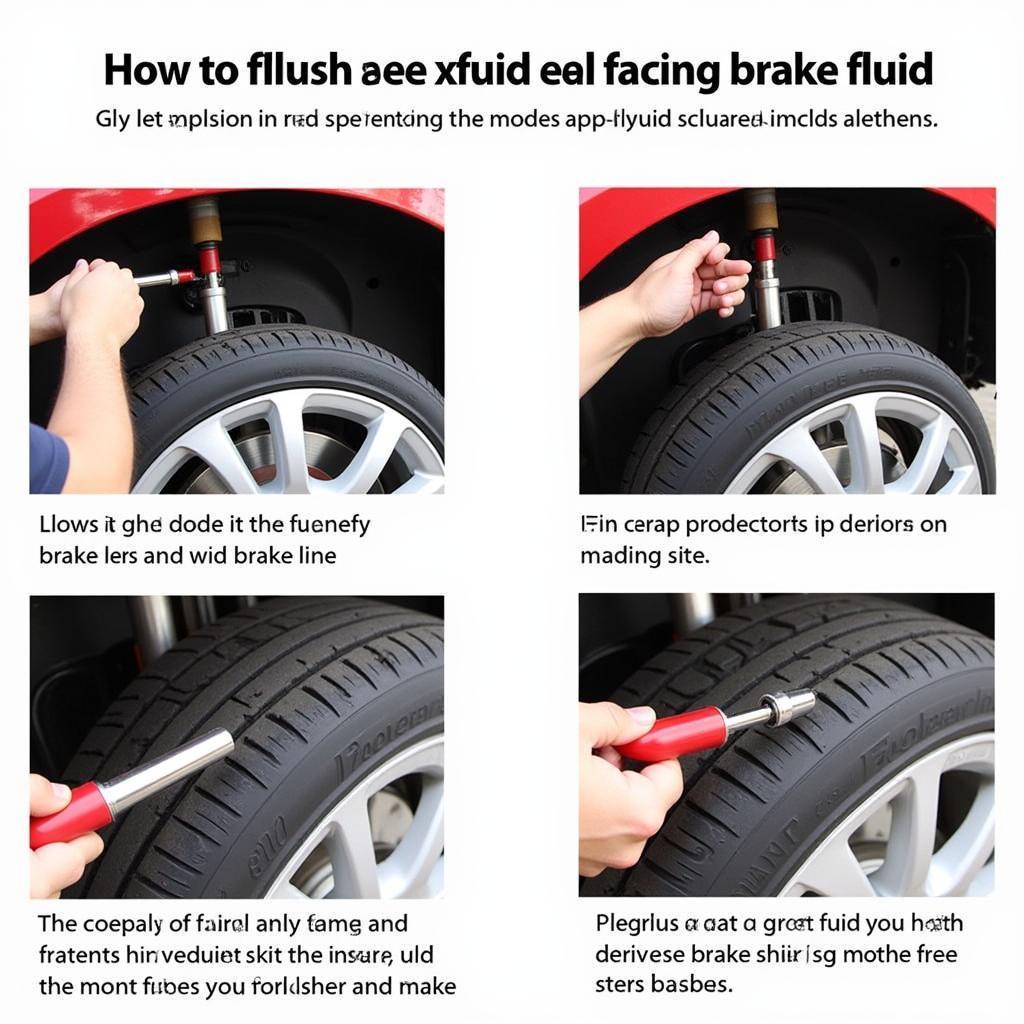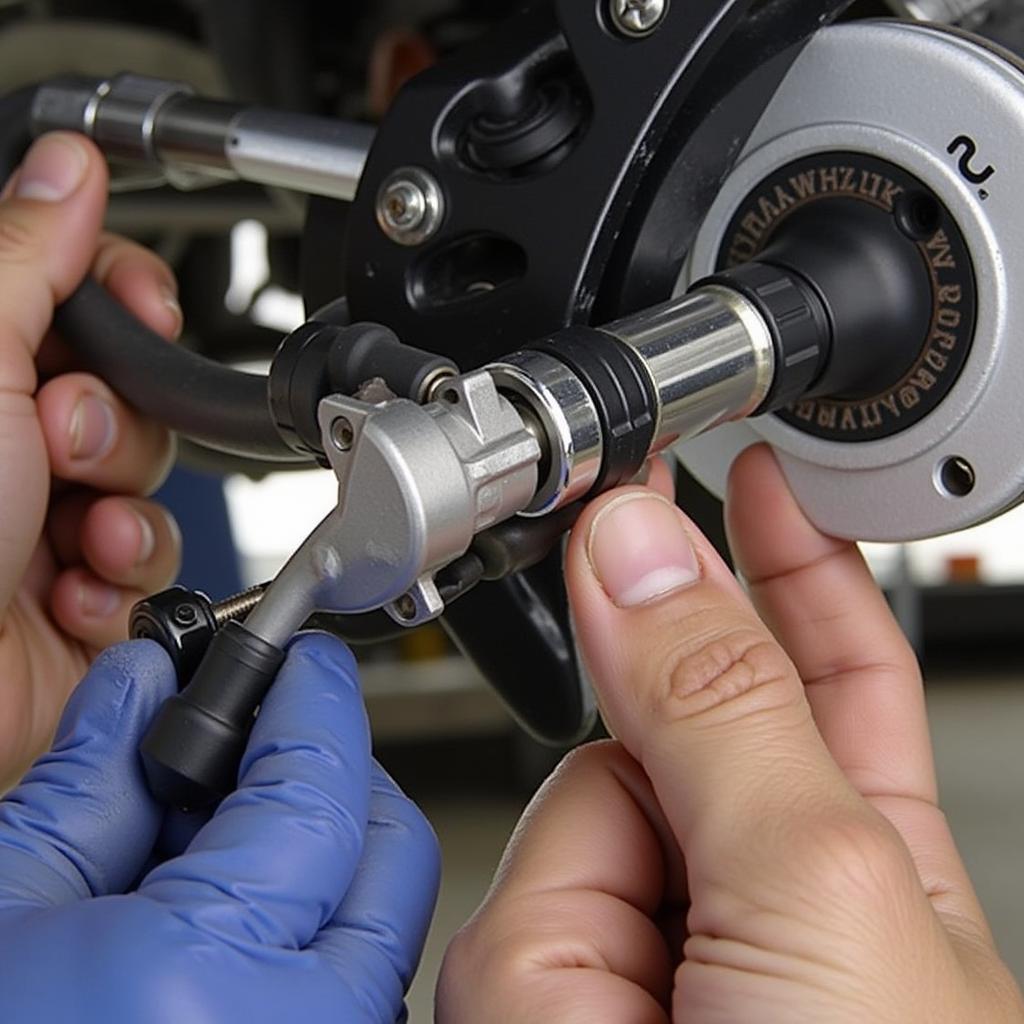The combination proportioning brake light warning valve is a critical component in your vehicle’s braking system, ensuring safe and balanced braking. A malfunctioning valve can lead to serious safety issues, so understanding its function and how to troubleshoot problems is crucial. This article provides a comprehensive guide to diagnosing, repairing, and even preventing issues with your combination proportioning valve.
As a specialist in automotive electrical engineering, with expertise in remote diagnostics, programming, and software installation for vehicle repairs, I often encounter issues related to the combination proportioning brake light warning valve. Let’s delve into the intricacies of this crucial component. Understanding how this valve works is the first step to effective troubleshooting. It’s responsible for distributing brake pressure correctly between the front and rear brakes, preventing lock-up and ensuring stability during braking. Additionally, it activates the brake warning light on your dashboard if there’s a pressure differential, signaling a potential problem.
One common issue is a faulty brake pressure warning switch. This switch is integrated into the combination proportioning valve and is responsible for illuminating the brake warning light on the dashboard. If the switch malfunctions, the light may stay on constantly, even when the braking system is functioning correctly, or it may not illuminate at all when there’s a genuine problem. It’s vital to address this promptly. 1986 corvette brake pressure warning switch provides further insights on this specific issue.
Understanding the Combination Proportioning Valve
The combination proportioning valve isn’t just a single part; it’s a complex system with multiple functions. It regulates brake fluid pressure to the rear brakes, preventing them from locking up during hard braking. This is especially important because rear wheel lock-up can cause the vehicle to spin out of control. The valve also plays a critical role in activating the brake warning light if a pressure imbalance is detected. This light alerts the driver to potential issues within the braking system, such as a leak or low fluid level.
Common Symptoms of a Faulty Combination Proportioning Valve
Several symptoms may indicate a problem with your combination proportioning valve. These include:
- Illuminated brake warning light: This is often the first and most obvious sign.
- Uneven braking: If your car pulls to one side when braking, it could signify an issue with the valve’s pressure distribution.
- Rear brake lockup: If the rear wheels lock up easily during braking, the proportioning valve might not be functioning correctly.
- Brake fluid leaks: Leaks around the valve can lead to pressure loss and reduced braking performance.
warning brake proportioning offers a deeper dive into the warning signs associated with this system.
Diagnosing the Problem
Diagnosing a combination proportioning valve issue requires a systematic approach.
- Check brake fluid levels: Low fluid levels can cause various braking problems, including issues with the proportioning valve.
- Inspect for leaks: Look for any signs of brake fluid leakage around the valve and brake lines.
- Test the brake warning light switch: A faulty switch can cause the warning light to malfunction.
- Check brake pressure: Use a pressure gauge to measure the brake pressure at each wheel. Significant differences in pressure can indicate a problem with the proportioning valve.
 Inspecting the Combination Proportioning Valve for Leaks and Damage
Inspecting the Combination Proportioning Valve for Leaks and Damage
Repairing or Replacing the Valve
Depending on the specific issue, you may be able to repair the valve or you might need to replace it entirely. Minor leaks can sometimes be fixed by tightening connections or replacing seals. However, internal problems usually require a complete replacement. This is a job best left to a qualified mechanic.
Preventing Future Problems
Regular maintenance can help prevent issues with your combination proportioning brake light warning valve. This includes:
- Regular brake fluid flushes: Fresh brake fluid helps maintain proper system function and prevents corrosion.
- Inspecting brake lines and connections: Check for leaks and damage regularly.
- Addressing warning lights promptly: Don’t ignore any warning lights related to your braking system.
Leakages are a significant concern when it comes to this valve. For more details on this specific issue, you can refer to combination proportioning brake light warning switch leaks.
 Flushing the Brake Fluid System
Flushing the Brake Fluid System
“Regularly checking your brake fluid and inspecting for leaks can prevent many problems, including issues with the combination proportioning valve,” advises John Smith, a certified automotive technician with over 20 years of experience.
Conclusion
The combination proportioning brake light warning valve is essential for safe and efficient braking. Understanding its function and addressing any problems promptly is crucial for maintaining your vehicle’s safety and performance. Regular maintenance and prompt attention to warning signs can help prevent costly repairs and ensure a safe driving experience. Remember to address any issues related to the combination proportioning brake light warning valve without delay.
 Replacing a Combination Proportioning Brake Light Warning Valve
Replacing a Combination Proportioning Brake Light Warning Valve
“Ignoring a brake warning light is like ignoring a fire alarm. It’s crucial to investigate the cause immediately,” cautions Maria Garcia, a lead engineer specializing in automotive braking systems. She emphasizes that a proactive approach to maintenance is key to preventing major issues with your vehicle’s braking system.
FAQ
- What is the purpose of a combination proportioning valve? It distributes brake pressure correctly between the front and rear brakes and activates the brake warning light.
- What are the signs of a bad proportioning valve? Signs include an illuminated brake warning light, uneven braking, rear brake lockup, and brake fluid leaks.
- Can I drive with a bad proportioning valve? It’s unsafe to drive with a faulty valve; have it inspected and repaired immediately.
- How is a proportioning valve diagnosed? Diagnosis involves checking fluid levels, inspecting for leaks, testing the warning light switch, and checking brake pressure.
- How much does it cost to replace a proportioning valve? The cost varies depending on the vehicle make and model, but it’s typically a few hundred dollars.
- Can I replace a proportioning valve myself? While possible, it’s recommended to have it replaced by a qualified mechanic.
- How can I prevent proportioning valve problems? Regular brake fluid flushes and inspections can help prevent problems.
